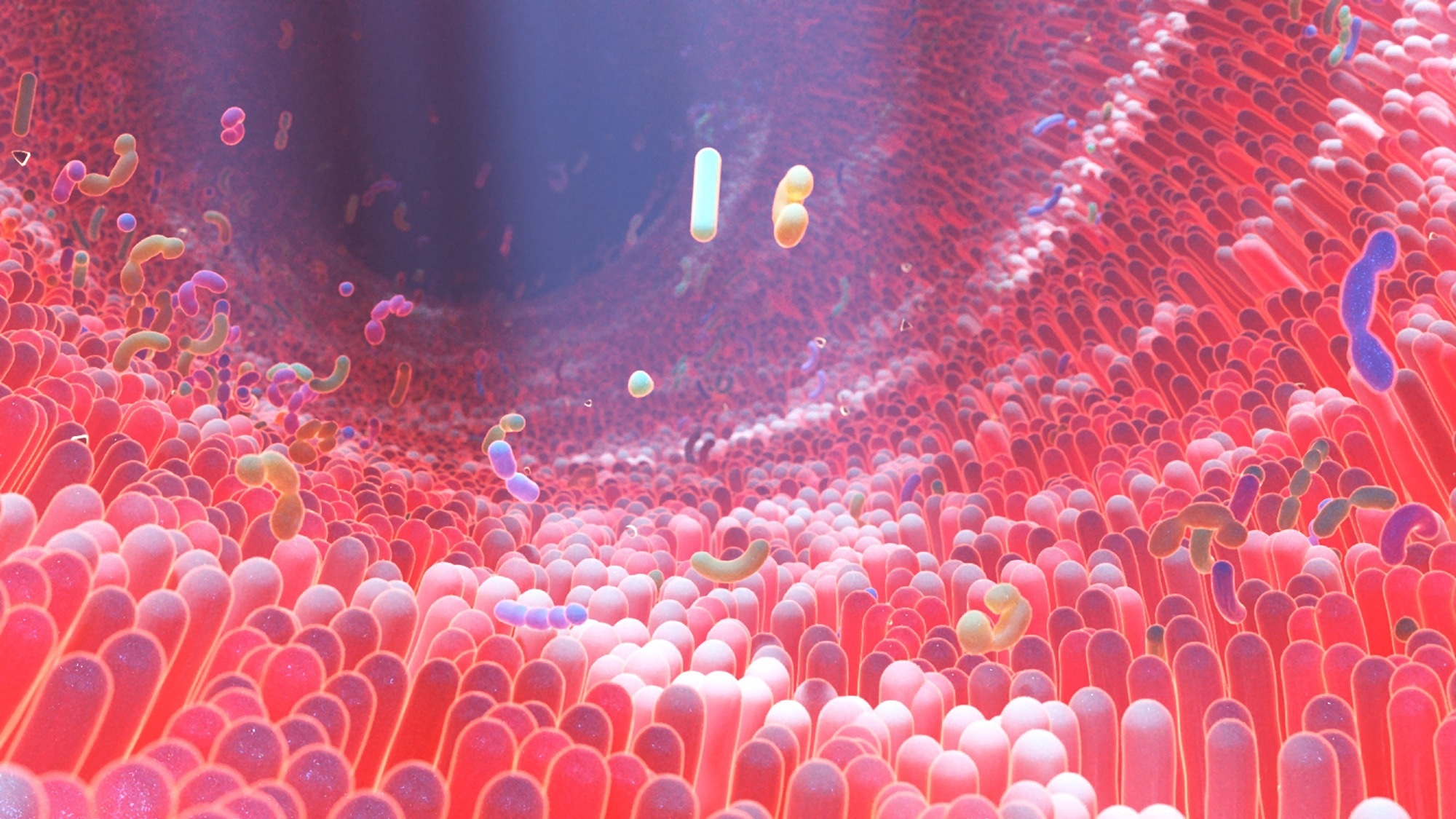In a recent article published in BMC Endocrine Disorders, researchers explored gut-inhabiting bacteria in pre-type 2 diabetes (pre-T2D) patients and newly diagnosed T2D patients. The study compared the gut microbiota profiles with healthy individuals.
 Study: Exploring the gut microbiota in patients with pre-diabetes and treatment naïve diabetes type 2 - a pilot study. Image Credit: Alpha Tauri 3D Graphics/Shutterstock.com
Study: Exploring the gut microbiota in patients with pre-diabetes and treatment naïve diabetes type 2 - a pilot study. Image Credit: Alpha Tauri 3D Graphics/Shutterstock.com
Background
Pre-diabetics have higher than normal blood sugar levels, which makes them prone to developing T2D. Additionally, treatment naïve T2D patients are recently diagnosed with T2D; thus, they have not started their medication. It is feasible for both types of patients to make lifestyle changes to prevent the onset of T2D and its management.
Research suggests that all patients with T2D have an altered gut microbiota composition compared to that found in healthy individuals, and studies have shown its effect on blood glucose levels, insulin resistance (IR), dyslipidemia, and inflammation. However, studies have not yet identified a microbiota profile specific to T2D.
About the study
In the current pilot study conducted in Norway on pre-T2D, treatment naïve T2D patients and healthy adult subjects, researchers used a combination of homogenization, cell lysis, and automated genomic DNA extraction to retrieve bacterial genomic DNA from fecal samples of all study participants. The DNA was analyzed using two Genetic Analysis (GA) platforms: the GA-map® 131-plex and the Long 16S using Unique Molecular Identifiers – Sequencing (LUMI-Seq)™ platform.
The GA-map® 131-plex targeted bacterial 16S ribosomal ribonucleic acid (rRNA) gene regions V3-V9, and LUMI-Seq™ targeted V1-V9. These nine hypervariable (VH) gene regions have valuable phylogenetic information on gut-inhabiting bacterial communities.
The former used pre-selected targets and pre-determined taxonomic levels, whereas LUMI-Seq™ sequencing entailed full-length 16S rRNA sequencing, which led to differences in the phylogenetic resolution achieved by the two platforms. Accordingly, researchers could broadly screen all potential T2D-specific bacteria using these two platforms.
The team used LUMI-Seq™ platform to screen gDNA retrieved from fecal samples of 16 T2D, 22 pre-T2D, and 48 healthy subjects (n=86) and GA-map® 131-plex for screening gDNA of 18 T2D, 22 pre-T2D and 38 healthy subjects, i.e., a total of 78 samples.
Finally, the team analyzed data from both platforms using various statistical methods. In the GA-map® 131-plex data, they explored inter- and intra-group variations in the bacterial profiles of the pre-T2D, T2D, and healthy subjects using the non-parametric multivariate methods for principal component analysis (PCA) and Euclidean and Bray–Curtis methods for permutational multivariate analysis of variance (PerMANOVA).
Likewise, they explored inter- and intra-group variations in the bacterial profiles of the pre-T2D, T2D, and healthy subjects in the LUMI-Seq™ data using principal coordinates analysis (PCoA) and PerMANOVA.
Results
The GA-map® 131-plex is a research-only panel of probes targeting bacterial DNA that identifies and characterizes all major bacterial profiles in fecal samples related to the gut microbiota of healthy subjects and patients of T2D.
The polymerase chain reaction (PCR) based on a universal primer pair amplified the 16S rRNA gene hypervariable regions V3-V9, which the team hybridized to a 131-plex panel of DNA probes.
Next, a Luminex® 200™ instrument detected and quantified the fluorescent signal emitted by hybridized probes tagged with a detection fluorophore, indicating the abundance of target bacteria in a sample.
The PCA score plot of the GA-map® 131-plex data indicated the most significant bacterial profile variations in the pre-T2D group compared to the healthy group.
PerMANOVA analysis revealed a significant impact of body mass index (BMI) on this data but no or minimal effect on other clinical parameters, age, sex, and F-cal.
LUMI-Seq™ workflow involves barcoding each 16S RNA molecule with unique molecular identifiers (UMI), followed by amplification, fragmentation, and sequencing using the MiSeq™ platform. On average, it reconstructed 4,812 full-length 16S sequences per sample.
PCoA revealed little discrimination of samples per the clinical groups for the LUMI-Seq™ data, whereas PerMANOVA analysis showed no substantial impact on the clinical parameters, age, sex, and BMI.
Further, the authors noted that short-chain fatty acid (SCFA)-producing bacteria from the Bacillota (Firmicutes) phyla were differentially abundant in T2D and pre-T2D samples compared to healthy subjects.
Per classification models, Bacillota was among the top ten contributors facilitating the differentiation of pre-T2D and T2D from healthy people.
SCFA-producing bacteria, A. rectalis (Eubacterium rectale) and H. biformis (Eubacterium biforme) also helped differentiate pre-T2D and T2D patients from healthy subjects.
Another bacterial group in the top ten contributors was SCFA-producing Dorea, which was more abundant in pre-T2D and T2D patients. Notably, SCFA-producing bacteria, particularly butyrate, F. prausnitzii, and Roseburia, were decreased in pre-T2D and T2D patients.
Some opportunistic bacteria also helped differentiate pre-T2D and T2D patients from healthy subjects. Thus, Streptococcus and Proteobacteria were differentially abundant in pre-T2D patients.
It is worth noting that butyrate- and other SCFA-producing bacteria promote an anti-inflammatory environment inside the gut and help maintain regular gut functions. Studies also suggest they help improve IR and glucose tolerance.
On the contrary, Pseudomonadota-derived lipopolysaccharide (LPS) and opportunistic bacteria promote inflammation, which might contribute to the induction of IR and a low-grade inflammatory state.
Conclusions
Overall, this pilot study revealed that the differences in the abundance of SCFA-producing bacteria, inflammation-related, potentially pro-inflammatory, and opportunistic bacteria contributed to the variations in the gut microbiota signatures differentiating the pre-T2D and T2D patients from the healthy subjects.
Future studies should further refine diabetes-specific gut microbiota signatures identified in this study.